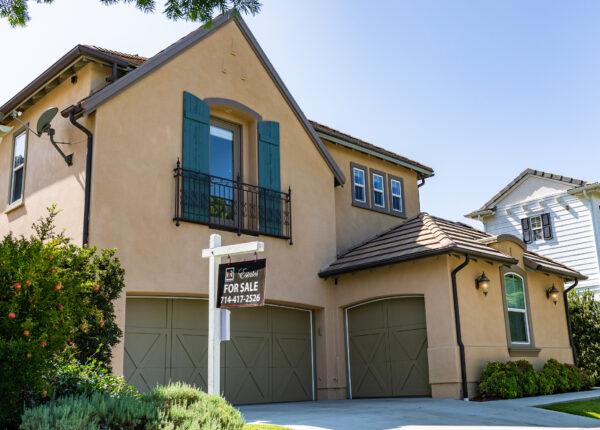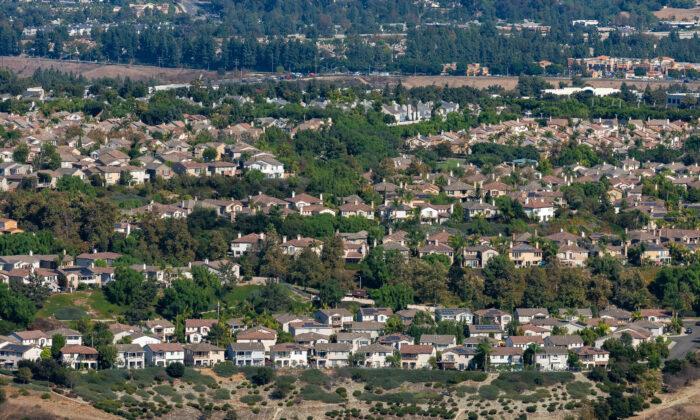Many potential buyers have been undeterred by rising home prices throughout Southern California, despite high unemployment and cutthroat competition for houses entering the market, say realtors.
Others, however, say they’ve been priced out of the state and have decided to leave—especially young, potential first-time buyers. Some experts are calling for a hike in mortgage interest rates to calm the market.
Tracey Kirk-Johnson, a realtor in Orange County, told The Epoch Times that California’s housing market is “looking up.”
“Pretty much each home that is selling, as long as it’s been listed at fair market value, ... is selling for the new high of the neighborhood,” she said.
She said prices are being driven up because there are “too few homes” and “too many qualified buyers wanting to take advantage of the low interest rates.”
“We don’t have enough homes to sell,” Kirk-Johnson said. “Buyers are waiving appraised value and coming in with the difference in cash.”
Daniel Peacock, a 32-year-old realtor from Carlsbad, told The Epoch Times that housing in Southern California is growing as an investment opportunity by the day.
“A lot of investors are putting their money into real estate because it’s a safe bet compared to other markets at risk from COVID-19,” Peacock said.
The main demographic in his area of business is middle-aged people looking for a different lifestyle, outside of the more populated areas, he said. “Land is hot right now. Everyone needs a place to live, especially since more people are working from home ... people want the space.”
While the market is booming, it comes with a cost, Peacock said. “The price of real estate is driving most young people out of the state.”

A Better Option
As home prices, along with taxes, continue to be higher than any other state, some young families are opting to leave for a higher quality of life.“My wife and I are leaving California for many reasons,” Matt Thalin, a construction worker leaving Los Angeles for Idaho, told The Epoch Times. “The biggest was being able to raise a family in a house that we can afford. The second reason was health. My wife has a lot of health issues, and being here is making them worse.”
Thalin said he and his wife want to be able to choose for themselves what’s best for their kids—and that California is “a state that wants to take that away from parents.”
“Politically, this city is a mess, and we see it getting worse every day—and quality of living is just a lot better outside the California walls,” he said.
According to a statewide survey conducted by the PPIC in 2017, 47 percent of Californians—including 61 percent of renters—said at the time that housing costs were a financial strain on themselves and their families. Since then, these costs have increased.
Bucking the Trend
While other Californians transition from urban areas to the suburbs, or choose to leave the state altogether, one young Los Angeles couple took advantage of a competitive home-buying opportunity and decided to purchase their first home in Inglewood, on the west side of Los Angeles.“I think that the adage of ‘location, location, location’ rings true,” Travis Anderson, 31, told The Epoch Times. “Inglewood is an up-and-coming area, and this particular part of Inglewood that we moved into is probably the best.”
The Year Ahead
In January, in his Reports on Housing, Thomas compared the market to “a pot of spaghetti that is boiling over” and said the only quick fix would be to “turn down the temperature.”“The only way to turn down the heat is for [interest] rates to rise,“ Thomas stated. ”Buyers may be rooting for an easier market with less competition, fewer competing offers, and a gentler rise in values, but that would come at the expense of higher rates and higher monthly payments.”
But local economist Tim Shaler told The Epoch Times that last year’s housing patterns could change and the market could adjust in 2021, as state-mandated regulations are lifted and schools, businesses, and entertainment venues slowly begin to reopen.
“The dramatic move away from urban centers to suburbs will likely slow dramatically after this upcoming home-buying season,” Shaler said. “As bars, restaurants, museums, live sports, live concerts, and other venues reopen, the advantages of being close to those venues will reemerge.”
Residents may also benefit from an unexpected fallout from the pandemic: reduced rents. “With rents so much lower now than when the pandemic started, many tenants may be able to get rent concessions from their current landlords, which would also slow their willingness to move away from the urban centers,” Shaler said.
“This slowing will also be affected by any change in interest rates—which are more likely to go up than down from here—and increased willingness to share confined spaces, such as elevators and office buildings, if enough of the population gets vaccinated.”






Friends Read Free